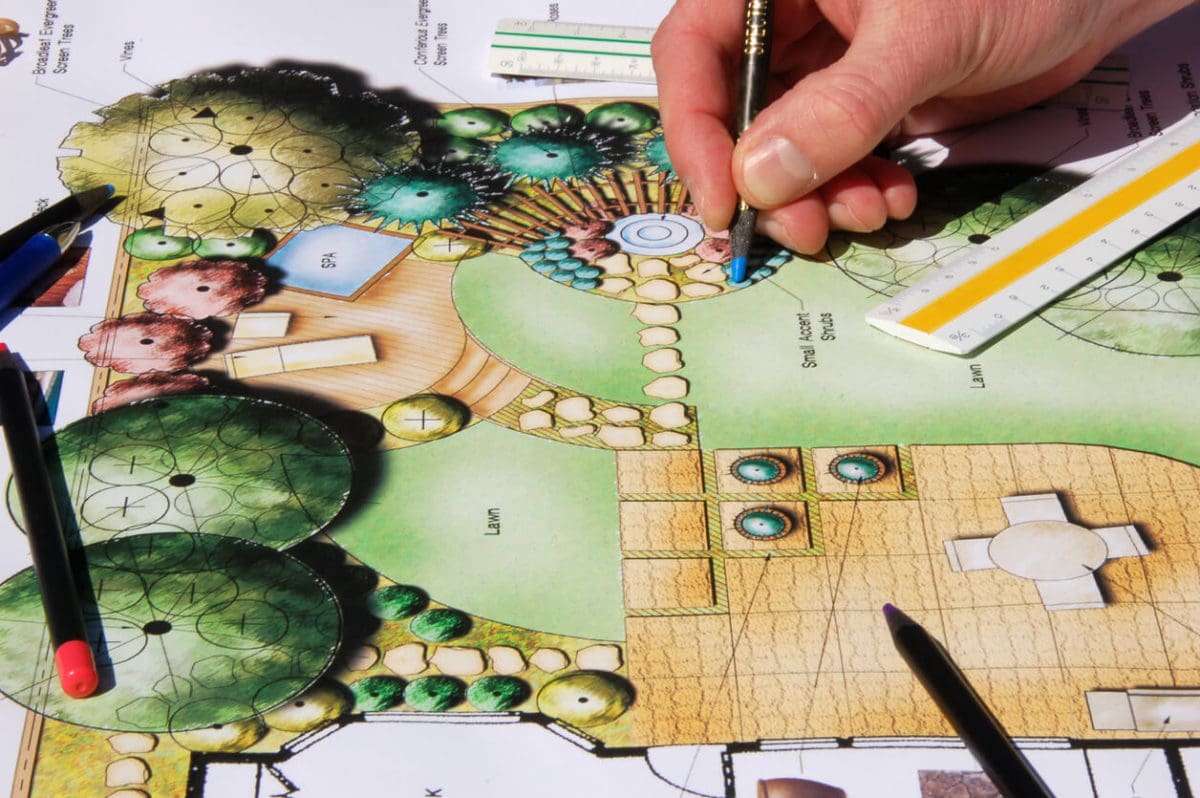Architect Collaboration Tips for Working with Contractors and Builders
Architect Collaboration Tips for Working with Contractors and Builders
Blog Article
Comprehending the Diverse Career Paths Available for Aspiring Architect
As an aspiring Architect, you have a globe of profession courses waiting on you. Each course provides one-of-a-kind challenges and possibilities to apply your imagination and technical knowledge. Whether you're attracted to standard design or the subtleties of sustainable style, there's a niche that lines up with your interests. Understanding these varied alternatives can shape your expert trip, yet which direction will you select to discover first?
Standard Style: Designing Frameworks and structures
Traditional design concentrates on designing buildings and structures that mix functionality with aesthetic allure. As you discover this area, you'll value the intricate balance between form and purpose. You'll learn to draw inspiration from historical styles, incorporating aspects like balance, products, and workmanship. Your styles can show social heritage, showcasing regional customs while satisfying contemporary requirements.
You'll develop abilities in composing, model-making, and site analysis, allowing you to imagine and communicate your concepts effectively. Engaging with clients, you'll require to comprehend their vision and equate it into feasible layouts.
Moreover, developing codes and sustainability practices are vital in your work, guaranteeing your frameworks are ecologically friendly and secure. As you expand in your career, you'll locate chances in household, industrial, or even restoration tasks, each offering special obstacles. Accepting conventional architecture leads the means for a meeting job that pays homage to the past while forming the future.
Urban Preparation: Forming Neighborhoods and Public Spaces
As an aspiring Architect, you can play a necessary role as a city coordinator, changing exactly how areas engage and operate. By utilizing area interaction approaches, you'll ensure that homeowners have a voice fit their setting. Plus, integrating lasting design principles will certainly help produce rooms that not only meet today's demands however also safeguard the future.
Duty of Urban Planners
While lots of may believe of architects as the sole dreamers behind structures, metropolitan organizers play an important role in shaping the more comprehensive landscape of areas and public areas. By working together with various stakeholders, you'll help make parks, transport systems, and residential areas that promote social interaction and accessibility. Your knowledge in spatial design and area characteristics allows you to envision future development while protecting social heritage.
Neighborhood Engagement Strategies
Reliable neighborhood involvement approaches are crucial for metropolitan planners to ensure that the voices of locals are listened to and valued in the planning procedure. To promote meaningful discussion, you ought to focus on open online forums and workshops where community participants can reveal their ideas and worries. Use studies and social media to get to a wider target market, making sure diverse point of views are consisted of. Working together with regional companies can boost trust and promote much deeper connections. It is very important to provide clear info concerning proposed jobs and decision-making processes, allowing citizens to really feel informed and equipped. By proactively listening and integrating comments, you'll produce rooms that reflect the neighborhood's demands, ultimately bring about more successful and lasting urban atmospheres. Welcome transparency and continuous dialogue for long-term impact.
Sustainable Style Principles
When designing metropolitan spaces, integrating lasting style principles is critical for developing environments that prosper both environmentally and socially. You ought to start by concentrating on power effectiveness, using materials that decrease waste and promote recycling. Take into consideration incorporating green rooms, like yards and parks, to improve biodiversity and improve air top quality. Promoting walkability and public transport can reduce reliance on vehicles, cultivating a much healthier neighborhood.
Creating with water preservation in mind is likewise key-- assume concerning rain yards and absorptive surfaces to manage stormwater. Entailing neighborhood participants during the preparation process warranties that the spaces you create satisfy their requirements and encourage social communication. By embracing these concepts, you'll contribute to vibrant, lasting metropolitan landscapes that profit everyone.

Landscape Style: Developing Sustainable Outdoor Environments
As you check out landscape architecture, you'll find important layout concepts that develop lovely and functional exterior rooms. Lasting methods play an important duty in making sure these settings flourish while reducing ecological effect. And also, you'll locate a variety of occupation opportunities that permit you to make a real distinction in exactly how people engage with nature.
Design Principles in Landscape
Recognizing layout concepts in landscape design is crucial for producing sustainable outside atmospheres that balance with nature. You'll need to contemplate elements like scale, percentage, and equilibrium to ensure your layouts feel natural and welcoming. In addition, pay interest to seasonal modifications, developing with materials that complement the environments year-round.
Lasting Practices Introduction
Lasting techniques in landscape design not just focus on visual appeals yet also prioritize eco-friendly wellness and resource conservation. You can make spaces that promote dirt wellness, such as using natural materials and practicing permaculture principles. Ultimately, these techniques guarantee your layouts profit both people and the setting for years to come.
Profession Opportunities Expedition
With a solid structure in sustainable techniques, landscape design provides a variety of job courses that allow you to make a purposeful effect on the environment. Urban organizers usually work together with landscape architects to develop eco-friendly spaces in metropolitan settings, boosting city livability. If you're passionate concerning education, take into consideration ending up being a landscape architecture instructor, inspiring future generations.
Lasting Design: Concentrating On Eco-Friendly Practices
As you discover your profession in architecture, accepting environment-friendly methods can establish you apart in an affordable field. Lasting style focuses on creating buildings that minimize environmental influence while enhancing passenger health. By including eco-friendly materials, energy-efficient systems, and lasting building methods, you'll add to a greener future.
Beginning by getting expertise of green qualifications like LEED or helpful hints BREEAM, which can bolster your qualifications. Consider exactly how all-natural light, air flow, and thermal efficiency can enhance style. Team up with engineers and ecological experts to introduce solutions that decrease waste and save sources.
Do not neglect the importance of neighborhood participation-- interesting neighborhood stakeholders can inspire designs that balance with the setting. As customers significantly prioritize sustainability, your knowledge in green techniques will certainly not only attract jobs however likewise meet your enthusiasm for liable style. Embrace this essential aspect of the occupation, and enjoy your job flourish.
Historic Preservation: Securing and Recovering Social Heritage
While you commence on your architectural trip, consider the essential role of historic preservation in preserving our social heritage. This area concentrates on the protection and reconstruction of significant structures, websites, and structures that tell the stories of our past. By engaging in historic conservation, you'll aid safeguard the architectural legacy that shapes neighborhood identity.
As a historical conservation Architect, you'll analyze historic importance and examine the condition of frameworks. You'll work closely with preservationists and historians to assure authentic reconstruction techniques are used. This profession course allows you to mix creativity with research study, allowing you to develop solutions that value initial materials and workmanship.
Your click for more info job not only adds to sustainability by recycling existing buildings yet also promotes a feeling of pride within neighborhoods. Welcoming this path will aid you become a guardian of history, maintaining the tales and aesthetics that enhance our lives.
Inside Architecture: Enhancing Indoor Spaces
Historic conservation and indoor architecture both share a commitment to improving the constructed environment, however they concentrate on various aspects. While historic conservation stresses maintaining a framework's social and historic value, indoor architecture zeroes in on enhancing interior rooms for functionality and looks.
As an aspiring Architect, you'll discover that indoor design permits you to blend creative thinking with technological skills. You'll create rooms that not only look great however additionally advertise comfort and effectiveness. This area entails understanding exactly how light, shade, and products interact within a space, affecting mood and usability.
You'll work on various projects, from residential homes to commercial workplaces, making certain that each setting meets the needs of its occupants. By focusing on customer experience, you can change insides into functional and motivating rooms, making a significant influence on how people connect with their surroundings. Embrace the possibility to boost indoor atmospheres and shape the means individuals work and live.
Industrial Layout: Combining Performance With Looks
Commercial design plays a vital role in creating items that effortlessly blend aesthetics with capability, making certain that what you utilize everyday is not just aesthetically appealing but additionally useful. As an aspiring Architect, you can engage yourself in this area, concentrating on making every little thing from furnishings to customer electronics. Your job entails recognizing customer demands, products, and producing procedures, enabling you to develop ingenious solutions that improve everyday experiences.
In industrial style, you'll commonly team up with marketers, manufacturers, and designers, ensuring that your designs are not just attractive yet likewise possible. This profession path supplies a vibrant setting where creativity meets usefulness, making it a fulfilling selection for architects interested in try this web-site forming the products of tomorrow.
Often Asked Inquiries
What Educational Accreditations Do I Need to End Up Being an Architect?
To become a designer, you'll need a professional degree in design, commonly a Bachelor's or Master's. Additionally, you'll have to finish a teaching fellowship and pass the Architect Enrollment Evaluation to practice legally.
Exist Accreditation Requirements for Various Building Career Paths?
Yes, there're accreditation demands for different architectural paths. Architect. You'll require to pass examinations, total teaching fellowships, and in some cases seek specialized training, depending on your chosen emphasis, like landscape architecture, urban style, or historical preservation
What Software Application Abilities Are Necessary for Designers Today?

Just How Can I Gain Practical Experience While Examining Style?
You can gain sensible experience by interning at building companies, taking part in style competitors, volunteering for area projects, or teaming up with schoolmates on real-world assignments. These chances improve your skills and develop valuable links in the industry.
What Task Opportunities Exist Outdoors Traditional Style Firms?
You can explore different work chances outside standard architecture companies, like urban planning, interior decoration, landscape style, construction management, property growth, and even duties in sustainability consulting. Each deals unique difficulties and benefits.
Whether you're attracted to traditional style or the nuances of lasting layout, there's a niche that straightens with your interests.When making urban areas, integrating sustainable layout concepts is important for producing environments that flourish both environmentally and socially.As you discover landscape style, you'll uncover vital layout principles that develop useful and attractive exterior rooms.Understanding layout concepts in landscape architecture is essential for producing lasting exterior environments that harmonize with nature.In industrial layout, you'll usually team up with makers, engineers, and marketing professionals, guaranteeing that your layouts are not only lovely but additionally possible.
Report this page